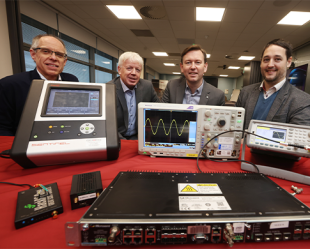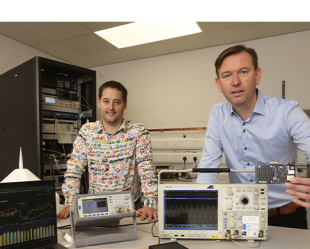NSAI is warning consumers that the highly poisonous gas carbon monoxide is produced anywhere a fuel is burned, not just in the home. The warning comes on Carbon Monoxide Awareness Week, September 26th – October 2nd.
On average six people in Ireland die each year from carbon monoxide poisoning and yet it is estimated over 730,000 adults in the country do not own a carbon monoxide alarm.
“Carbon Monoxide is a highly poisonous gas and is often called the silent killer, as it has no smell, colour or taste and at high levels can kill in as little as three minutes,” said Yvonne Wylde, Technical Standards Manager at NSAI.
“Carbon Monoxide is produced when any fossil fuel is burned, for example, peat, turf, wood, wood pellets, coal oil, or petrol. But it doesn’t just occur at home – carbon monoxide can be produced anywhere that fuel is being burned, such as caravans, tents, boats, workplaces etc. Therefore it’s crucial everyone is aware of the dangers and takes precautions. Make sure your home has at least one audible carbon monoxide alarm, especially wherever there is a fuel burning appliance and always follow the manufacturer’s instructions. An audible carbon monoxide alarm should also be fitted in caravans, boats and other locations where fuel is burned,” she added.
Make Sure Your Carbon Monoxide Alarm Complies with Standards
There are thousands of carbon monoxide alarms for sale in Ireland, but some do not comply with standards. The NSAI is advising consumers and businesses to look out for three quality marks when purchasing a carbon monoxide alarm; EN 50291, the CE-Mark symbol and end-of-life indicator. These symbols indicate the alarm has been tested and certified to the highest quality standards. A basic audible carbon monoxide alarm that complies with EU standards costs between €20 and €30.
CEO of NSAI, Maurice Buckley said while carbon monoxide alarms are important, they are no substitute for prevention.
“For as little as €20, carbon monoxide deaths could be prevented with the purchase of an audible Carbon Monoxide alarm. However, carbon monoxide alarms are no substitute for having your appliances, be it gas, oil, wood or fossil fuel, properly installed and regularly serviced by a qualified service agent. It is also vital your home or business has the appropriate ventilation.”
If you suspect carbon monoxide poisoning, stop using any fuel burning appliances, ventilate the property and visit your medical practitioner immediately. Arrange for an inspection of your appliances by a registered gas installer, oil technician or qualified service agent for your fuel type before reusing the appliance and install an audible carbon monoxide alarm.
NSAI’s Top 5 Tips on how to protect yourself from Carbon Monoxide
- Be Aware – any appliance burning any type of fuel can produce carbon monoxide
- Ensure fuel burning appliances are properly installed and regularly maintained by a qualified service agent. Get your chimney swept once a year
- Use fuel burning appliances correctly and for their intended purpose. Read instructions carefully and never use an appliance you suspect may be faulty
- Keep vents, flues and chimneys clear at all times
- Have at least one audible carbon monoxide alarm installed in your home and anywhere else you burn fuel. Make sure the alarm contains the three standards symbols EN 50291, the CE-Mark symbol and end-of-life indicator. Check the alarm regularly, by pressing the ‘test’ button
What are the symptoms of Carbon Monoxide poisoning?
When inhaled, carbon monoxide prevents blood from absorbing oxygen. At high levels it can kill in as little as three minutes. At low levels it can cause illness such as headaches, drowsiness, nausea, vomiting, chest and stomach pains, dizziness, and loss of consciousness.
Where does Carbon Monoxide comes from?
Carbon Monoxide can be released by any fuel when it is burned, including coal, turf, gas, oil, wood.
Harmful levels can be produced by:
- Badly installed, faulty or blocked heating appliance, chimney or flue
- Blocked or insufficient ventilation in rooms
- Barbeques – when in use but also they can release the gas after they appear extinguished. Always use a BBQ in a well-ventilated place and never bring it under cover or inside a tent
- Petrol-driven machinery. Never run a car, lawnmower, generator or other engine-powered equipment in a confined, closed or poorly ventilated space. Ensure exhaust fumes are not drawn through open doors, windows or vents.
- Improper use of fuel burning appliances, such as, using a gas grill with the door closed, burning rubbish in an open fireplace or stove that could block the chimney, bring a BBQ under a cover
What if my Carbon Monoxide Alarm goes off?
- Open doors and windows to ventilate the area
- Turn off or stop using any fuel burning appliances immediately
- Get everyone in the property into fresh air
- If you are sure you are not suffering any symptoms relating to carbon monoxide poisoning, call a qualified service agent to check your appliances before you re-use them
- If you are still concerned, call the Carbon Monoxide Awareness Line, 1850 79 79 79
What are the tell-tale signs of Carbon Monoxide?
- Staining, sooting or discolouring around the appliance
- Condensation on your windows, dampness on walls once appliance is lit
- A strange smell when the appliance is on (remember: carbon monoxide itself has no smell but other fumes produced by burning may smell)
- A yellow or orange flame on a gas appliance when it is normally blue
Who can I talk to for Carbon Monoxide Advice?
For general advice visit CARBONMONOXIDE.IE or call 1850 79 79 79
Gas Appliances – Contact a registered gas installer. Visit RGII.ie or call 1850 454 454
LPG Appliances – Contact a registered gas installer or Visit ilpga.ie
Oil Appliances – Contact an OFTEC Registered Technician. Visit OFTEC.org or call 01 8645771
Solid Fuel Appliances – Contact your appliance supplier or manufacturer



